Salt Tree: A medicinal plant for the digestive tract
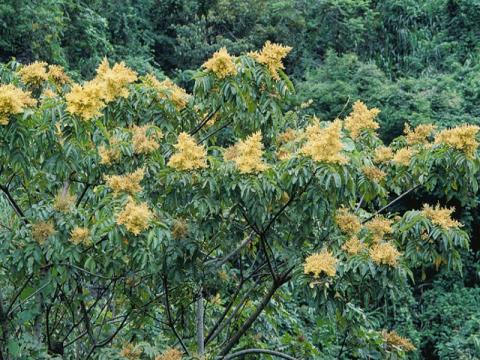
Salt tree is also known as Diem Phu Moc. This is the plant known as the source of the Five-fold medicine. However, in folk medicine, the tree is also used leaves, roots, stems and bark as a medicine. To learn more about the uses, uses and things to know about the salt plant, please read the following article.
content
- 1. Description
- 2. Harvesting and preparing
- 3. Chemical composition
- 4. Pharmacological effects
- 5. Uses and dosages
- 6. Experience remedy
1. Description
Salt tree , also known as Ngu Boi Tu Moc, Diem Phu Moc. Scientific name: Rhus chinensis Mill. Belongs to the family Anacardiaceae.
1.1. Description
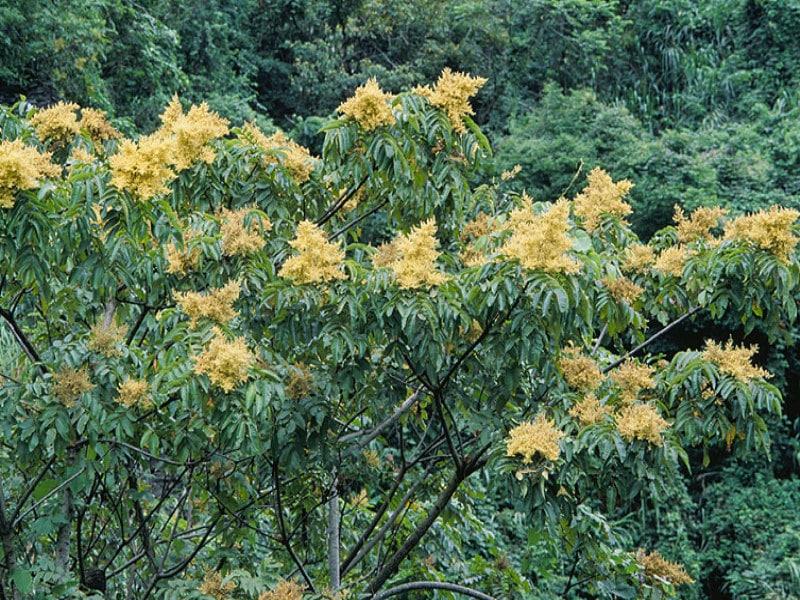
Salt Tree
Small tree or small tree, 5-10m high. Young branches, petioles and flower stalks covered with short brown hairs. Leaves compound, alternately pubescent, shaft and petioles often winged. Leaflets 7-13, thin, 5-12cm long, 2-5cm wide, coarsely serrated margins. The underside of the leaves has short ash brown hairs.
Petals apex, flowers small, hermaphroditic, yellow-white. Sepals 5 - 6, petals 5 - 6. Nut round, 5mm diameter, pink, with white ash-colored hairs.
Salt tree flowers
Flowering June - July, fruiting October - November.
1.2. Distribution
Salt tree has a distribution starting from East India to Myanmar, Laos, China, Japan, Taiwan, Vietnam, Thailand, Malaysia, Indonesia (Sumatra and Java). The plant is also grown in Java for medicinal purposes. In Vietnam, salt is a common plant in nature, scattered throughout the provinces, from the average mountainous area (1,000m) to the low mountain, midland, sometimes even in the central coastal plain. and large islands.
Salt is a light-loving plant that can grow in arid areas (low shrub hills), newly excavated land or in abandoned upland fields, in some localities in Quan Ba and Yen Minh districts. (Ha Giang); Bao Thang, Bat Xat (Lao Cai)… There are areas where salt trees grow quite concentrated. It often grows above low shrubs or tall grasses, producing abundant fruit. In winter when the fruit is old, the leaves turn yellow and fall simultaneously. Salt tree regenerates naturally mainly from seeds. The remaining stem and root after being cut are capable of regenerating shoots.
>> You can learn more: Eucalyptus: Nature's miracle essential oil .
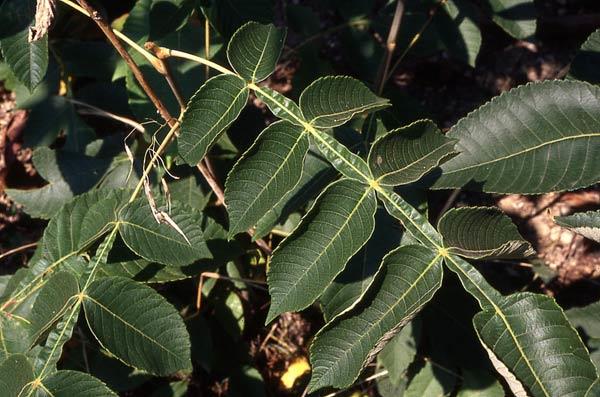
The special shape of the branches and leaves of the Salt tree
2. Harvesting and preparing
Roots are harvested all year round. The leaves are harvested in the summer and autumn, washed, dried or used fresh. Seeds are obtained from old fruit. Five spores are nests made by the insect Melaphis chinensis (Bell) Baker on the leaves of the Salt tree, collected in the fall, dipped in boiling water or food until the outer surface is gray.
3. Chemical composition
Seeds contain 50-70% tannin, sometimes 80%, the main component is penta-m-digaloyl-β-glucose. In addition, there are 2 - 4% gallic acid, lipid, resin, starch, organic acid, tartric acid, citric acid, flavonoids.
The roots have flavones, phenols, organic acids, tannins, and fatty oils. From the leaves, 4 flavones and ethvl gallate and semialatic acid were extracted.
Moronic, betulenic, 6-pentadecylsalicylic acids are biologically active substances.
4. Pharmacological effects
4.1. Anti-virus activity
- Anti-HIV Activity
In a recent study, different segments of the salt plant showed strong anti-HIV-1 activity. Two compounds in the plant Salt inhibit HIV-1 replication in chronically infected H9 cells and may target late stages of the HIV-1 life cycle.
- Anti-herpes simplex virus activity
In vivo studies performed in rats have shown that the hot water extract of the salt plant is prophylactic and therapeutic against herpes simplex virus (HSV) type 1 (HSV-1). This extract was also effective against acyclovir-resistant HSV-1 and HSV type 2 (HSV-2) infections in mice and improved the therapeutic effect of acyclovir in HSV-1-infected mice.
Oral administration of moronic acid three times a day to mice infected with HSV-1 significantly slowed the development of skin lesions and/or prolonged the mean survival time of infected mice without toxicity compared with witness. Moronic acid induced stronger anti-HSV-1 activity in the brains of HSV-1-infected mice than in the skin, similar to the hot water extract of the salt plant.
4.2. Anti-cancer activity
Certain molecules found in the salt plant such as pentagalloylglucose and gallic acid have been shown to have anticancer activities. Pentagalloylglucose has been shown to have antitumor effects in vivo against prostate cancer, lung cancer, and sarcoma. It also has an in vitro inhibitory effect on the growth and/or invasion of breast cancer, leukemia, melanoma and liver cancer . Pentagalloylglucose may exert its antitumor activity through inhibition of angiogenesis and invasion of metastatic melanoma cells.
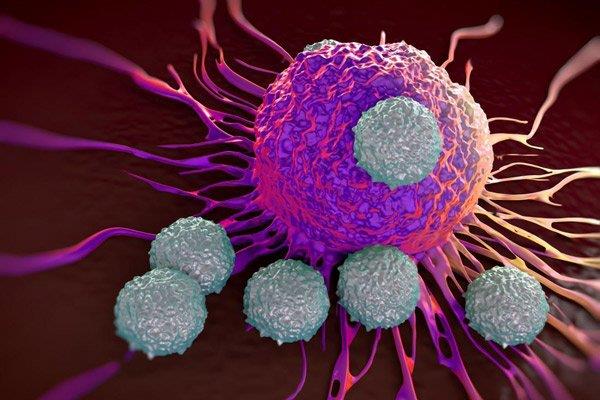
Studies show that the salt plant is effective in the treatment of cancer
4.3. Anti-diabetic activity
Tannic acid, a pentagalloylglucose-containing gallotannin mixture, was found to have hypoglycemic effects in patients with type 2 diabetes . Using pentagalloylglucose synthesis in vitro and in an animal test, it has been shown that pentagalloylglucose effectively reduces blood glucose and insulin levels in vitro and in animal models. Unlike most antidiabetic drugs, pentagalloylglucose can lower blood glucose without increasing fat.
4.4. Anti-diarrheal activity
Methanol extract from the dried ripe fruit of the salt plant was tested in experimental models of castor oil-induced diarrhea in Swiss albino rats. At the classified doses, the extract showed significant antidiarrheal activity . The evidence was an 80.70% reduction in defecation rate of control animals at a dose of 600mg/kg body weight. This extract also reduced MgSO4-induced intestinal secretion and gastrointestinal motility following coal meal administration in albino rats.
5. Uses and dosages
5.1. Uses
- Leaves: Pain reliever, can stimulate blood circulation, cough up blood, inflammation, laryngitis, abdominal pain, traumatic fracture, increase sperm secretion, snake bite, antitussive, diarrhea.
- Fruit: Colon, diarrhea, dysentery, jaundice and hepatitis.
- Seeds: Cough, dysentery, fever, jaundice, hepatitis, malaria and rheumatism.
- Root: Diarrhea, increased spermatogenesis, malaria, cough treatment, anasarca treatment, jaundice and snakebite.
- Five-fold: Diarrhea, diabetes, antiseptic, antipyretic, astringent, hemostatic, persistent cough with blood, spontaneous sweating, dysmenorrhea, bloody sputum, burns, hemorrhoids, dental disease , fever, malaria, inflammation, intoxication, aches and pains, skin infections, rectal and bowel cancer .
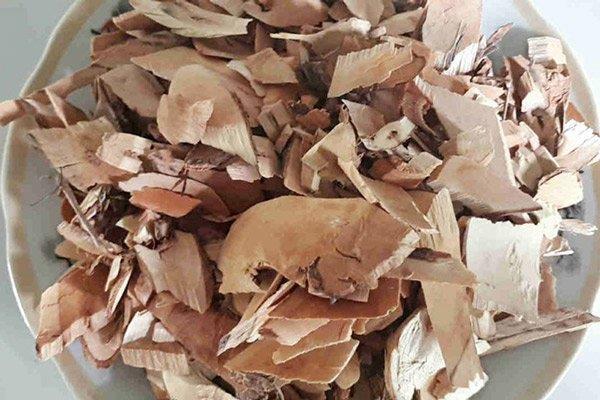
This is a medicine with many uses
5.2 Dosage
Day 2-5g decoction form. External use 0.5 - 2g.
6. Experience remedy
- Treatment of dysentery with blood for a long time: Use Ngu Boi Tu 1 ounce (40g). Alum phi 5 pounds (20g) powdered with paste, drink with rice water each time 2g to 8g. Drink 2-3 times a day.
- Cure a long-term cough, spitting up blood: Use the five-star vine to crush it, drink 4g each time with tea after a meal. Drink 2-3 times a day.
- Cure gum ulcers and toothaches: Use Five-way zigzag to rub the floss on the painful area.
- Burns, sores, wounds: Wash with a solution of 5 - 10% of the five worms.
- Hydrocephalus: Root bark Salt 4 - 8g, cook drinking water.
In summary, the salt tree is a precious plant with many uses such as antiviral, anti-cancer, anti-diabetes… Traditional medicine uses the salt tree to treat diarrhea, cough, sores, toothache... This article is for reference only. When you want to use the drug, you need to consult the treating doctor. Hope you have had useful knowledge, wish you a lot of joy and health!
Doctor Nguyen Tran Anh Thu